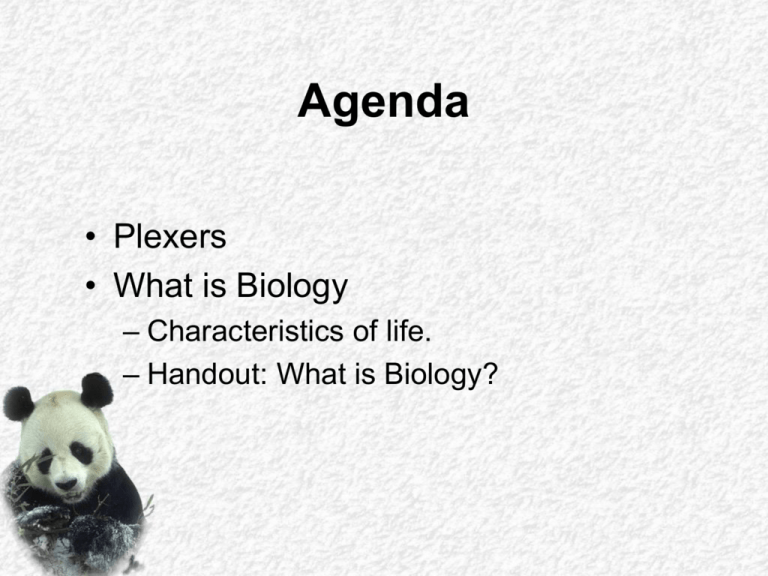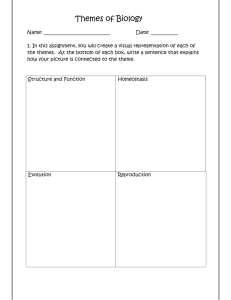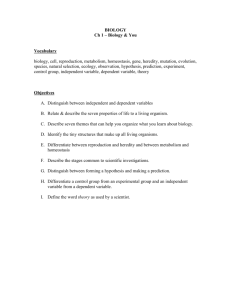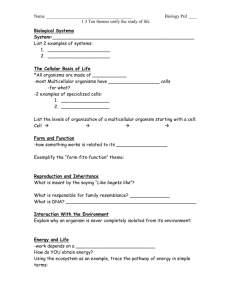What is Biology? What is Life?
advertisement

Agenda • Plexers • What is Biology – Characteristics of life. – Handout: What is Biology? By the end of this lesson… • Students should be able to: – Identify the definition of Biology and list several topics/concepts studied in Biology. – Recognize that all living things share seven characteristics of life. – Describe the seven characteristics of life. – Say: “Sally sells sea shells down by the sea shore” three times very quickly. Why should I be excited about Biology? What is Biology? What is Life? Biology • Biology is defined as the study of life. • The term biology is composed of two roots: – bio = life – logos = study of Topics in Biology • There are many topics which biology covers. In this class we will mainly be concerned with the following: – Basic Biochemistry – Chemistry of life – Cells – The building blocks of life – Genetics – How life functions & reproduces – Evolution – Life changing over time – Taxonomy – Classification of living things – Ecology – Interactions of living things – Microbiology – Life too small for the unaided eye to observe Who Studies Biologic Concepts? The Science Name & What they Study • Botany – Plants • Cytology – Cells • Ecology – Relations between living things and their surroundings • Zoology – Animals All this creates a Question: What is Life? Am I Alive? Characteristics of Life • All life has seven characteristics in common: – Living things are made of cells. – Living things maintain their internal environment. – Living things pass on their traits. – Living things perform chemical activities. This is known as metabolism. – Living things grow and develop. – Living things respond to a stimulus. – Living things reproduce. Cells – All living things are made of one or more cells. – A cell is the smallest unit capable of all life processes Homeostasis – All living organisms must maintain a stable internal environment in order to function properly. – The maintenance of a stable internal environment in spite of changes in the external environment is called homeostasis. Metabolism – Living organisms carry out different chemical reactions in order to obtain energy. – The sum of all the chemical reactions carried out in an organism is called metabolism. – Almost all of the energy used by living things originally comes from the sun. Response to Stimuli – In addition to maintaining a stable internal environment, living organisms respond to their external environment. – Can you think of a way that you have responded to your environment today? Reproduction • Most living things can reproduce. Reproduction is the process by which organisms make more of their own kind from one generation to the next. Heredity & Evolution – When an organism reproduces, it passes on its own traits to its offspring in a process called heredity. – Inherited characteristics change over generations. This process is called evolution Growth and Development – All living organisms grow. – As organisms grow, many change. This process is called development. – Development differs from evolution because development refers to change in a single individual during that individual’s life.








